How safe is that doggie at the window? Animal lovers in the United Kingdom have reasons to worry. While there is no dearth of Bulldogs and Labrador retrievers, there are some breeds that are at risk. Their numbers are dwindling and could even face extinction. In the UK, The Kennel Club, the world’s oldest body that oversees canine activity with the largest database of pedigree dogs in the country, has revealed breeds that are in danger. As the popularity of certain breeds drops, their numbers are decreasing. Some are dogs which are bred for hunting and countryside pursuits and others are household names. At least ten breeds saw the lowest numbers of puppy registrations last year and there is growing fear that they could die out. In 2022, there were more vulnerable breeds than ever before. The Kennel Club monitors breeds with between 300 and 450 puppy registrations a year and those whose numbers fall sharply are tagged as “at risk”. We take a look at our furry friends facing extinction. [caption id=“attachment_12221542” align=“alignnone” width=“640”] Graphic: Pranay Bhardwaj[/caption] Rough collies, the breed of movie star Lassie According to The Kennel Club, the dog breed which is very close to being put in the “at risk” category is the rough collies. Lassie from the 1994 movie based on Eric Night’s novel Lassie Come Home is what comes to mind when you think of this breed. The registration of rough collies dropped by 94 per cent since 1979, which is a record low. At the time when the breed was at peak popularity, there were more than 8,000 registrations every year, making it among the top 10 favourites in the UK. Last year, there were less than 500 rough collie puppies born, a 25 per cent drop since 2021. This is the lowest recorded number for rough collies since the 1940s. [caption id=“attachment_12221582” align=“alignnone” width=“640”]
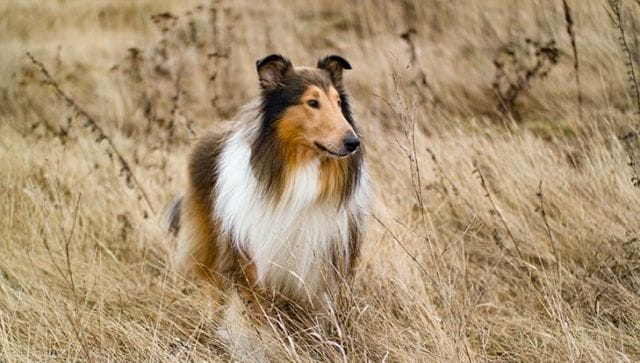 Rough collies, the breed of the movie star dog Lassie, were popular in the 1970s. Image courtesy: American Kennel Club[/caption] The breeds with less than 300 pups annually are put on the club’s “vulnerable native breeds” list, which highlights British and Irish native breeds that face the risk of disappearing. Carole Smedley, chair of the Rough Collie Breed Council, told The Independent, “It is such a shame that some of our most native historic and recognisable breeds are continuing to drop in popularity and we hope that more people will become aware of the range of breeds out there and responsibly select the right one for them.” She said that they are friendly and happy dogs who adore children. Also read: Furry Worries: People are abandoning their dogs and cats. Inflation is responsible Foxhound The English foxhound has been bred for over 200 years. It has strong hunting instincts and a sharp sense of smell. They are known for their speed and were used to chase and kill foxes. [caption id=“attachment_12221622” align=“alignnone” width=“640”]
Rough collies, the breed of the movie star dog Lassie, were popular in the 1970s. Image courtesy: American Kennel Club[/caption] The breeds with less than 300 pups annually are put on the club’s “vulnerable native breeds” list, which highlights British and Irish native breeds that face the risk of disappearing. Carole Smedley, chair of the Rough Collie Breed Council, told The Independent, “It is such a shame that some of our most native historic and recognisable breeds are continuing to drop in popularity and we hope that more people will become aware of the range of breeds out there and responsibly select the right one for them.” She said that they are friendly and happy dogs who adore children. Also read: Furry Worries: People are abandoning their dogs and cats. Inflation is responsible Foxhound The English foxhound has been bred for over 200 years. It has strong hunting instincts and a sharp sense of smell. They are known for their speed and were used to chase and kill foxes. [caption id=“attachment_12221622” align=“alignnone” width=“640”] Foxhounds were bred 200 years ago and were used for hunting. Reuters[/caption] Last year, only one Foxhound puppy was registered; it was the first that was born in the UK in the last five years, according to a report on MailOnline. Larger hunting dogs may not be as popular today because they require more exercise to remain fit. People also fear their bloody instincts. Also read: The Crown and the Corgis: What happens to Queen Elizabeth's beloved pets now? Harrier They resemble the Beagle and while the Harrie looks as adorable, it’s another hunting breed that was traditionally raised to go after hares. These dogs can be traced back to the 13th Century. Though a hunting breed, they are said to be good with children and other dogs, reports MailOnline. [caption id=“attachment_12221642” align=“alignnone” width=“729”]
Only nine Harriers were registered i the UK in 2022. Image courtesy: American Kennel Club[/caption] Greyhound From the Middle Ages, these canines were once owned by royalty and nobility. They are hunting dogs with great eyesight. Sometime during the 1920s, they became popular and were used for racing as they can achieve a top speed of 70 kph. [caption id=“attachment_12221662” align=“alignnone” width=“640”]
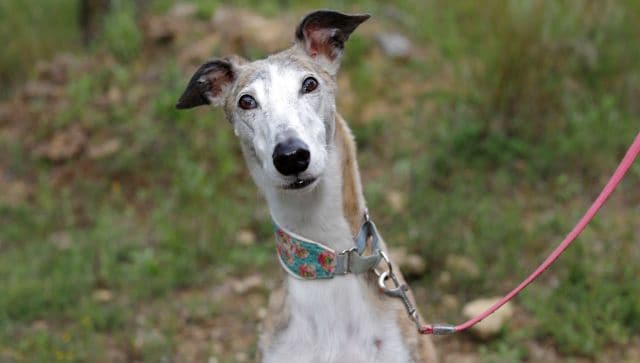 Greyhounds are known for their eyesight. Reuters[/caption] Last year, only 22 Greyhound puppies were registered at The Kennel Club. However, there is a rise in the adoption of retired racing hounds as they sleep 18 hours a day and require less space. Otterhound They have an oil, waterproof coat and webbed feet, which makes them good swimmers. This breed was thriving in the 12th Century and was used to hunt otters. Hence the name. After otter hunting was banned in the UK in 1978, their numbers dropped. [caption id=“attachment_12221682” align=“alignnone” width=“640”]
Greyhounds are known for their eyesight. Reuters[/caption] Last year, only 22 Greyhound puppies were registered at The Kennel Club. However, there is a rise in the adoption of retired racing hounds as they sleep 18 hours a day and require less space. Otterhound They have an oil, waterproof coat and webbed feet, which makes them good swimmers. This breed was thriving in the 12th Century and was used to hunt otters. Hence the name. After otter hunting was banned in the UK in 1978, their numbers dropped. [caption id=“attachment_12221682” align=“alignnone” width=“640”]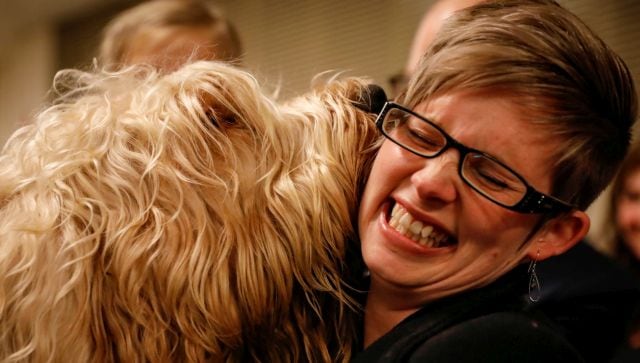 These big furry dogs were bred to hunt otters, which were considered as pests back in the day. Reuters[/caption] In the UK, only 30 puppy registrations were recorded last year and across the world, their numbers have reduced to a mere 1,000. Bloodhound They are recognised for their wrinkly skin and long flappy ears. They seem lethargic but bloodhounds have the keenest scent. They have between 250 and 300 million scent receptors, more than double the average dog. They are the only animal whose evidence is admissible in court in the country, according to the report. Bloodhounds were bred to hunt deer and wild boar but later doubled up as excellent police dogs that were used to track humans over long distances and in search-and-rescue ops. [caption id=“attachment_12221692” align=“alignnone” width=“640”]
These big furry dogs were bred to hunt otters, which were considered as pests back in the day. Reuters[/caption] In the UK, only 30 puppy registrations were recorded last year and across the world, their numbers have reduced to a mere 1,000. Bloodhound They are recognised for their wrinkly skin and long flappy ears. They seem lethargic but bloodhounds have the keenest scent. They have between 250 and 300 million scent receptors, more than double the average dog. They are the only animal whose evidence is admissible in court in the country, according to the report. Bloodhounds were bred to hunt deer and wild boar but later doubled up as excellent police dogs that were used to track humans over long distances and in search-and-rescue ops. [caption id=“attachment_12221692” align=“alignnone” width=“640”]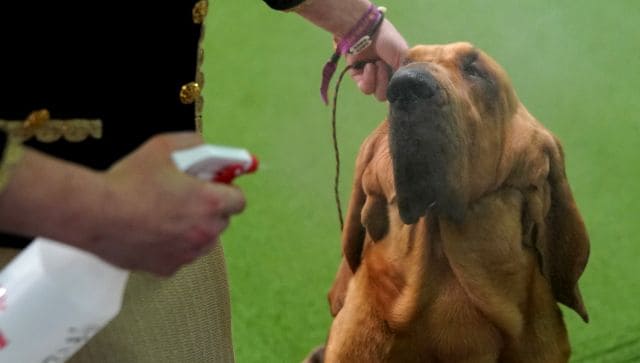 Bloodhounds require large living areas and a lot of exercises to keep fit. AFP[/caption] Only 30 were registered at The Kennel Club last year. Large dogs, these hounds need a lot of space and ample exercise to stay fit. They have a peculiar odour and tend to slobber which makes them less popular today. Smooth collies Smooth collies were reportedly used as shepherd dogs in Scotland in the 5th Century. During a visit to Balmoral Castle, Queen Victoria was fascinated by them and began keeping them as pets. [caption id=“attachment_12221702” align=“alignnone” width=“640”]
Bloodhounds require large living areas and a lot of exercises to keep fit. AFP[/caption] Only 30 were registered at The Kennel Club last year. Large dogs, these hounds need a lot of space and ample exercise to stay fit. They have a peculiar odour and tend to slobber which makes them less popular today. Smooth collies Smooth collies were reportedly used as shepherd dogs in Scotland in the 5th Century. During a visit to Balmoral Castle, Queen Victoria was fascinated by them and began keeping them as pets. [caption id=“attachment_12221702” align=“alignnone” width=“640”]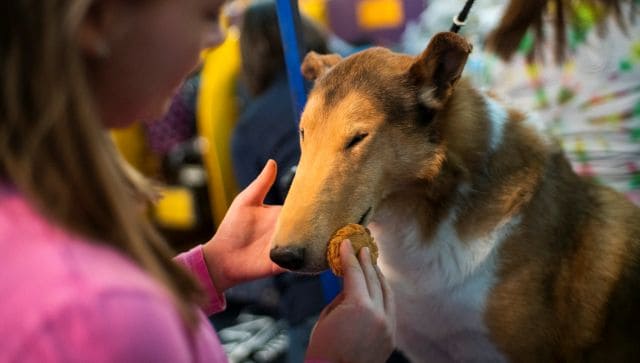 Smooth collies were a favourite of Queen Victoria. Reuters[/caption] However, they aren’t a favourite anymore. Around 44 smooth collies were registered in 2022. They are less popular than rough collies. Sussex spaniels They too have a royal connection but that might not be enough to save the breed. Sussex spaniels were bred as gun dogs in the late 1700s or early 1800s in Rose Hill, East Sussex, by Augustus Fuller, a shooting estate landowner. Popular in the 19th Century, their numbers dropped to seven by the end of the Second World War, according to the MailOnline report. [caption id=“attachment_12221722” align=“alignnone” width=“640”]
Smooth collies were a favourite of Queen Victoria. Reuters[/caption] However, they aren’t a favourite anymore. Around 44 smooth collies were registered in 2022. They are less popular than rough collies. Sussex spaniels They too have a royal connection but that might not be enough to save the breed. Sussex spaniels were bred as gun dogs in the late 1700s or early 1800s in Rose Hill, East Sussex, by Augustus Fuller, a shooting estate landowner. Popular in the 19th Century, their numbers dropped to seven by the end of the Second World War, according to the MailOnline report. [caption id=“attachment_12221722” align=“alignnone” width=“640”]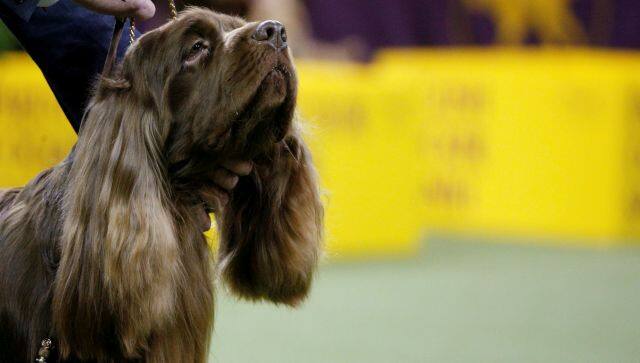 A plea was made to Prince Harry and Meghan to adopt a Sussex spaniel. They did not. Reuters[/caption] English breeder Joy Freer saved them from extinction. Declared vulnerable in 2004 by The Kennel Club, their numbers were once again revived courtesy of dedicated breeders. In 2019, the Duke and Duchess of Sussex were asked to adopt a pair of puppies. They did not. Now only 44 are left in the UK, according to official records. Field spaniel Cocker spaniels are well-known; the field spaniels are their rarer relative. It was bred in the 19th Century but it did not become popular as a hunting dog, as its dark fur made it difficult to spot. Its short legs also made it impractical. [caption id=“attachment_12221752” align=“alignnone” width=“640”]
A plea was made to Prince Harry and Meghan to adopt a Sussex spaniel. They did not. Reuters[/caption] English breeder Joy Freer saved them from extinction. Declared vulnerable in 2004 by The Kennel Club, their numbers were once again revived courtesy of dedicated breeders. In 2019, the Duke and Duchess of Sussex were asked to adopt a pair of puppies. They did not. Now only 44 are left in the UK, according to official records. Field spaniel Cocker spaniels are well-known; the field spaniels are their rarer relative. It was bred in the 19th Century but it did not become popular as a hunting dog, as its dark fur made it difficult to spot. Its short legs also made it impractical. [caption id=“attachment_12221752” align=“alignnone” width=“640”]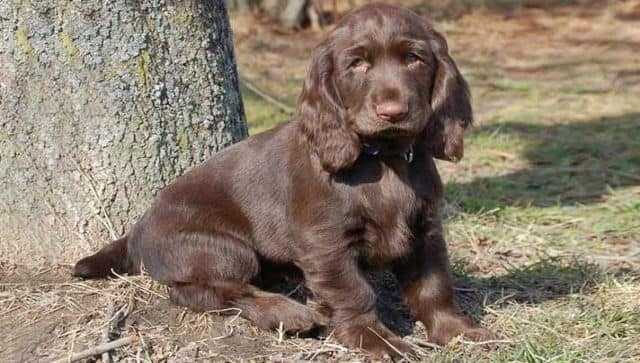 While cocker spaniels are popular pets, field spaniels do not have many takers. Image courtesy: American Kennel Club[/caption] While other spaniels English Cocker and English Springer are preferred as pets, field spaniels have never been a popular choice. There were only 53 field spaniel registrations in 2022. English toy terrier In Victorian times, this breed caught vermin in a ring. It was a spectator sport, which was banned in the early 20th Century. These dogs, the black and tan variety, became a regular feature of the show ring. It was split into two weight classes and the “toy” version was born. [caption id=“attachment_12221772” align=“alignnone” width=“640”]
While cocker spaniels are popular pets, field spaniels do not have many takers. Image courtesy: American Kennel Club[/caption] While other spaniels English Cocker and English Springer are preferred as pets, field spaniels have never been a popular choice. There were only 53 field spaniel registrations in 2022. English toy terrier In Victorian times, this breed caught vermin in a ring. It was a spectator sport, which was banned in the early 20th Century. These dogs, the black and tan variety, became a regular feature of the show ring. It was split into two weight classes and the “toy” version was born. [caption id=“attachment_12221772” align=“alignnone” width=“640”]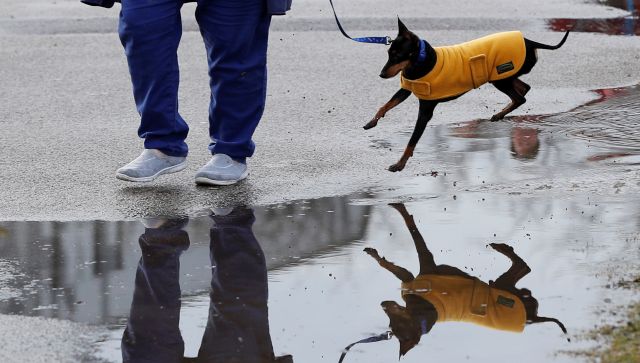 English toy terriers caught vermin in a ring during the Victoria era. Reuters[/caption] However, people did not take to them as pets and about 64 were registered last year. King Charles spaniel Having the name of Britain’s monarch is not enough to save this breed. The original canines were developed from toy spaniels and were popular lapdogs back in the day. King Charles II loved them so much, he could barely part with his pets. In 1945, the breed was split into two: Cavalier King Charles Spaniel and King Charles Spaniel. The Cavalier became more popular and the population of the latter declined. [caption id=“attachment_12221782” align=“alignnone” width=“640”]
English toy terriers caught vermin in a ring during the Victoria era. Reuters[/caption] However, people did not take to them as pets and about 64 were registered last year. King Charles spaniel Having the name of Britain’s monarch is not enough to save this breed. The original canines were developed from toy spaniels and were popular lapdogs back in the day. King Charles II loved them so much, he could barely part with his pets. In 1945, the breed was split into two: Cavalier King Charles Spaniel and King Charles Spaniel. The Cavalier became more popular and the population of the latter declined. [caption id=“attachment_12221782” align=“alignnone” width=“640”]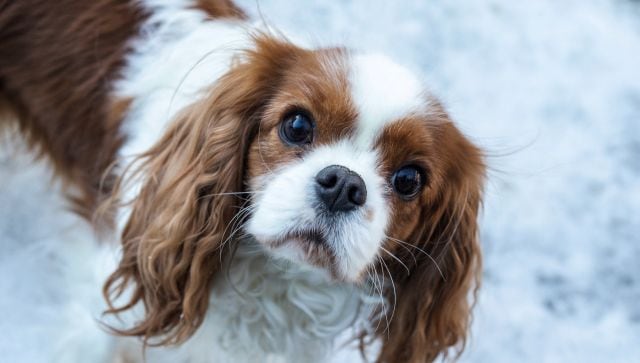 Cavalier King Charles spaniels are more popular than the King Charles spaniels, dogs which were loved by King Charles II. AFP[/caption] The breed also is associated with health problems related to the heart and the eye. In 2022, 68 puppies were registered but there is a possibility that their demand might go up ahead of the 6 May
coronation of King Charles III . Picking dog breeds The popularity of dog breeds is dominated by trends, pop culture, and celebrity ownership. Also, people living in smaller houses pick pets which need less space. Kennel Club spokesperson Bill Lambert told MailOnline that some breeds like the Otterhound and Terrier dogs, which were developed to hunt hare and vermin, are less relevant today. “…. Some of these breeds are in danger of becoming forgotten… if people don’t look beyond the most popular choices then there is a real danger we could lose them forever,” he said. With inputs from agencies Read all the Latest News , Trending News ,
Cricket News , Bollywood News , India News and Entertainment News here. Follow us on
Facebook,
Twitter and
Instagram.
Cavalier King Charles spaniels are more popular than the King Charles spaniels, dogs which were loved by King Charles II. AFP[/caption] The breed also is associated with health problems related to the heart and the eye. In 2022, 68 puppies were registered but there is a possibility that their demand might go up ahead of the 6 May
coronation of King Charles III . Picking dog breeds The popularity of dog breeds is dominated by trends, pop culture, and celebrity ownership. Also, people living in smaller houses pick pets which need less space. Kennel Club spokesperson Bill Lambert told MailOnline that some breeds like the Otterhound and Terrier dogs, which were developed to hunt hare and vermin, are less relevant today. “…. Some of these breeds are in danger of becoming forgotten… if people don’t look beyond the most popular choices then there is a real danger we could lose them forever,” he said. With inputs from agencies Read all the Latest News , Trending News ,
Cricket News , Bollywood News , India News and Entertainment News here. Follow us on
Facebook,
Twitter and
Instagram.
King Charles spaniels were loved by King Charles II so much that he didn’t part with them. The movie ‘Lassie’ made rough collies very popular. But now these breeds are at risk and there is fear in the UK that they will die out
Advertisement
End of Article


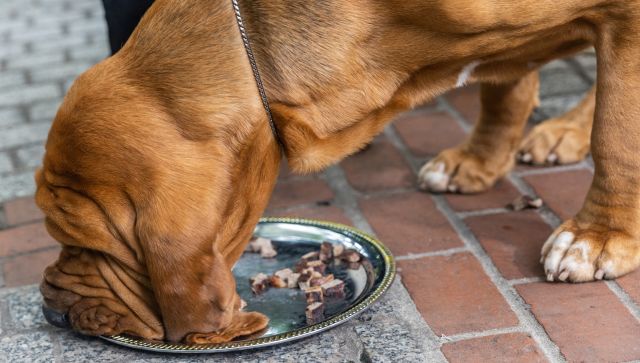)

)
)
)
)
)
)
)
)



